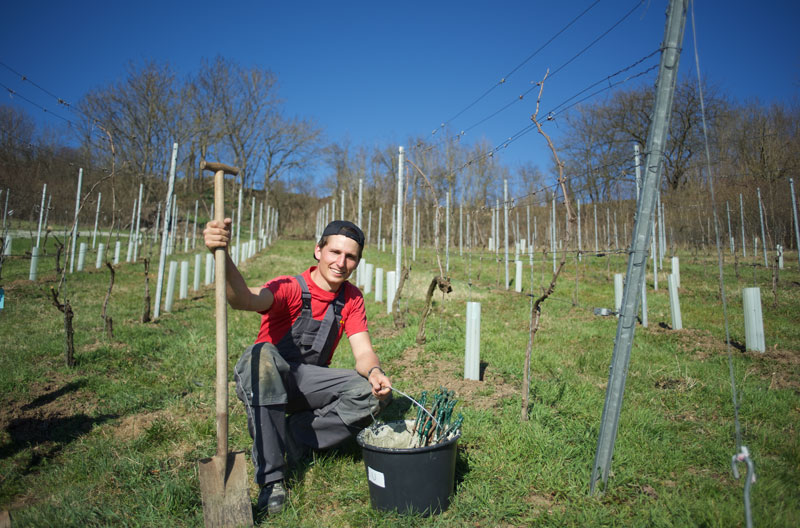"... Begründet 2017, begonnen mit einer kleinen Parzelle Silvaner (knapp 3000 m²), bewirtschaften wir in der thüringischen Einzellage 'Kaatschener Dachsberg' mittlerweile eine Fläche von knapp 9.000 m² (0,9 ha). Auf Verwitterungsmuschelkalkböden mit anteiligem Lösslehm gedeihen bei uns Silvaner, Riesling, Weißburgunder und Spätburgunder.
Unsere Trauben
Unser größter Schatz sind unsere Trauben, die wir mit viel Hingabe hegen, pflegen und ständig im Blick behalten. Die Gedanken schweifen stets um diese - unsere Basis - da es nichts wertvolleres gibt, als gesundes und reifes Lesegut zu verarbeiten und einen Wein entstehen zu lassen, der unseren höchsten Ansprüchen genügt.
Unsere Weine
Durch akribische Arbeit im Weinberg und selektive Traubenlese per Hand erhalten wir die besten Trauben - welche unseren Wein ausmachen: unverfälschter Weingenuss durch ein gutes Auge im Weinberg und minimalen Arbeitseinsatz im Weinkeller. Bei uns dürfen sich Moste zu ungestümen Weinen entwickeln und ihren eigenen authentischen Charakter zum Vorschein bringen. Sehr viel Zeit und jede Menge Geduld spielen bei der Vinifikation (Weinwerdung) für uns die wichtigste Rolle.
Ökologischer Weinbau
Durch wildwachsende Kräuter, Blumen und angrenzende Hecken schaffen wir einen ausgewogenen Lebensraum für Insekten und Nützlinge. Durch den bewusst gewählten Weg des Verzichts auf chemisch-synthetische Fungizide, synthetische Dünger und Herbizide, fördern wir den Bodenorganismus und schonen Flora und Fauna. Auch bei der Ausstattung (Flaschengewicht, Etikett, Verschluss, etc.) legen wir größten Wert auf unsere Umwelt, verzichten hierbei auf unnötigen Schnickschnack aus Plastik und konzentrieren uns auf das Wesentliche: unseren Wein!
Mit dem Jahrgang 2020, der aktuell noch in unseren französischen Barriques und Edelstahltanks reift, sind wir nun offiziell biozertifiziert!"
Aufgrund der geringen Größe des Weingutes und der ökologischen Anbaumethoden ist die Anzahl der Flaschen streng limitiert. Bitte besuchen Sie unseren Shop, um Ihre Flasche des einzigen Bioweins der Region zu bestellen!
